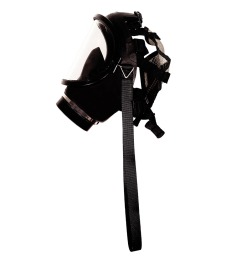military equipment
In recent years, the Iranian government has announced its self-sufficiency in important military hardware systems and defense systems.
During the Iran-Iraq War, Tehran began its weapons development program to counter US arms embargoes and its Western allies, and since 1992 has been producing tanks, armored personnel carriers, missiles, radars, boats, submarines, and unmanned vehicles. And fighter jets.
History
From 1925 until the Iranian Revolution in 1979, Iran was generally equipped with the latest Western military equipment. There are cases in which Iran used the equipment before it came under the standards of the country of manufacture (for example, the US Tomcat F-14 or the British Chiffon tank). Iran's main military suppliers included the United States, Britain, France, the Federal Republic of Germany (West Germany), Italy, Israel, and the Soviet Union.
The Iran-Iraq war and post-revolutionary sanctions at the time had a significant impact on Western equipment reserves in Iran. Under the pressure of the war, all resources were rapidly depleted and increasingly difficult to replace. The war eventually forced Iran to temporarily supply equipment from the Soviet Union, North Korea, Brazil, and China. However, the experience of using quality equipment in any branch of the Iranian Armed Forces has not been lost. Disappointed with being equipped by the old members of the Warsaw Pact, Iran seeks to develop its ability to simulate the technologies of its potential enemies, and to create a highly reliable source of equipment for the future.
After the Iranian revolution, the development of military technology was based on what the first founders of were Western contractors. In order to achieve full independence, Iran's dependence on these countries has been eliminated in most sectors over the past decade; Iran is currently reverse engineering existing foreign hardware to meet its needs and then mass-producing the final product. Many examples of this solution include the shiny and lightning fighter. Iran is trying to stabilize its military industry with a view to export potential.
Sairanian Full Face Mask
No size limit (free size)*
Sealable with all types of face shapes*
3-layer sealing with silicone sealing tapes*
Positive pressure breathing mask*
Viewing angle 165 degrees horizontally and 150 degrees vertically*
Has two additional clauses in times of crisis*
The placement of the air discharge umbilicus at a blind spot angle of view*
Test the sealing of the mask up to a pressure of 50 meters of water column*
Interchangeable lens with much less volume than Scott and Drager brands*
Sairanian brand mask is the first full-face mask produced in the country, all its components are produced domestically. This mask is designed in such a way that it intelligently and in accordance with the pressure of the user's lungs, regulates the flow of inhaled and exhaled air and is in fact a simulator of the user's lungs. The angle of view of the mask in the masks produced by Sairanian Company is 165 degrees of the horizon and 150 degrees of the vertical. The design of Sairanian mask mold is such that it can be sewn with all kinds of face shapes and includes all the range of small to large sizes. Panoramic mask based on a combination of natural rubber and chlororene produced by Sairanian Company has been tested in accordance with the requirements of IDS-PRF-0046 standard and its functional specifications have been approved. The lens of this mask is made of transparent and scratch-resistant polycarbonate and has a wide field of view.
Available in 4 sizes
Sealable with all types of face shapes
Can be used with all types of Scott respiratory systems
Positive pressure breathing mask
3M Scott Safety Vision 3 Face Mask
Drager FPS 7000 Face Mask
Has 9 sizes and 3 types of molds
Can be sealed with all types of face shapes
Has a 3-layer sealing using silicone seals
Positive pressure breathing mask
96319-05 MK II Full Face Mask
No size limit (free size)
Sealable with all types of face shapes
Negative pressure mask 3 color black،yellow and gray forrig users ,fire fighters and divers














